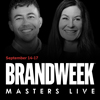In April, Olive Veronesi was in quarantine at her home near Pittsburgh when she realized she was down to her last 12 cans of Coors Light. A family member shared a photo of the 93-year-old in her doorway with a Coors Light in one hand and a sign that said, “I need more beer!!” in the other. Soon thereafter, Coors Light obliged with 10 free cases.
The story provided a moment of levity in the midst of the pandemic, but it also gave the beer brand an opportunity to retain a loyal customer as product shortages meant consumers bought whatever they could get their hands on.
Brand loyalty has otherwise been a tough racket in 2020. Data from consulting firm McKinsey shows that 36% of consumers have tried a new brand since the pandemic started and 73% of those customers plan to incorporate the brands into their new routines.
And while it certainly isn’t game over for prepandemic favorites, if shoppers try a competitor, consumer willingness to permanently switch demonstrates how little brands actually know about customer loyalty beyond superfans like Veronesi. That’s why data is essential to help engage consumers and respond to unexpected moments—like a pandemic.
Loyalty vs. habit
There’s a big difference between loyalty and habit, but purchase data alone doesn’t show it, said Americus Reed, professor of marketing at the University of Pennsylvania’s Wharton School. For example, Customer A and Customer B could purchase Oreos multiple times, but it’s Customer A who is really the diehard fan with Oreo memorabilia and fond memories of eating them growing up while Customer B just likes cookies.
“The basket looks the same [and] the behavioral data looks the same, so you may misdiagnose [the latter consumer] as being loyal,” Reed said. “But the answer is you don’t know. That’s something marketers have been faced with for a very long time, so they’ve been pulled into the trap that repeat purchase is actually loyalty.”
Habits, on the other hand, are easier to break because consumers aren’t as invested. That’s because shoppers who buy out of habit could be experiencing what Reed called “consumer inertia.” It’s seen in the airline industry, which he said created frequent flyer miles to cement habits.
“[Airlines] were smart. [They knew] it’s hard to create loyalty in [this] space, so [they decided to] create loyalty through inertia,” Reed added.
Loyalty, on the other hand, is more akin to fandom. Apple is an example of this, with customers that wait in line with hundreds of fellow fans whenever a new iPhone comes out.
“They become walking billboards. They are soldiers out there that defend the brand, talk up the brand and spread positive word of mouth,” Reed said. “That is not going to happen for someone buying [a brand] out of habit or inertia.”
‘A high-choice environment’
But those walking billboards are hard to come by—particularly in a pandemic.
In fact, Kate Muhl, vp analyst at research firm Gartner, said loyalty has always been fickle because “even in these choice-circumscribed times, we still live in a high-choice environment.”
So, for example, Customer C may be loyal to a product like Reese’s Puffs, but plenty of cereal alternatives exist. And given increased consumer consumption at home overall, General Mills may lose some Reese’s Puffs customers because of supply chain issues but will likely gain customers elsewhere. Plus, diehard Reese’s Puffs fans will probably come back to at least some degree when the cereal is available again.

Join the foremost brand marketers, such as Marc Pritchard of P&G, Brad Hiranaga of General Mills, Kory Marchisotto of e.l.f. and more, for Brandweek Masters Live on Sept. 14-17. Secure your pass today. Early-bird rates expire 9/1.
https://www.adweek.com/brand-marketing/the-pandemic-proved-there-is-no-brand-loyalty-beyond-obsessed-superfans/

